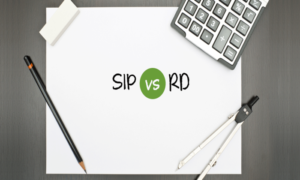As investors, we often speculate when to enter the market. But even experienced professionals find it difficult to determine accurately the right moment to enter (buy) or exit (sell) the market for their investments.
We often rely on our emotions, get swayed by market sentiments and end up buying when the markets are going higher and selling when they are lower. This is exactly what we should NOT be doing.
Rupee cost averaging helps us to minimize this guessing game. In the rupee cost averaging approach, you invest a fixed amount of money at regular intervals irrespective of whether the markets are going high or low. This ensures that you buy more units when the markets are low and lesser units when they are high. This approach brings down your average cost per unit over the long-term.
Systematic Investment Plans (SIPs) of mutual funds work on the rupee cost averaging approach.
Let’s take an example. Prisha invests a fixed amount of Rs 1,000 on the tenth of each month with a SIP in a mutual fund scheme. Let us see what happens in both the scenarios, if the market goes higher or falls. Let us say she started investing in April and the market went up for 8 months.
| Months | Amount Invested each Month | Price of Each Unit | No of Units accumulated |
| April | 1000 | 15 | 66.66 |
| May | 1000 | 16.5 | 60.66 |
| June | 1000 | 18.30 | 54.64 |
| July | 1000 | 22 | 45.45 |
| August | 1000 | 24.60 | 40.65 |
| September | 1000 | 25 | 40 |
| October | 1000 | 28.10 | 35.59 |
| November | 1000 | 29 | 34.58 |
| TOTAL | 8000 | 378.07 |
The average cost of buying each unit in this case comes at a much lower Rs 21.16 (total amount invested/total units accumulated).
Similarly, if we assume that the markets fall during the 8 months, the average cost of each unit would come to Rs 20.05 (see the table below).
| Months | Amount Invested each Month | Price of Each Unit | No of Units accumulated |
| April | 1000 | 27 | 37.03 |
| May | 1000 | 25.50 | 39.21 |
| June | 1000 | 23 | 43.48 |
| July | 1000 | 21.60 | 46.29 |
| August | 1000 | 20.10 | 49.75 |
| September | 1000 | 18.50 | 54.05 |
| October | 1000 | 16 | 62.50 |
| November | 1000 | 15 | 66.67 |
| TOTAL | 8000 | 398.98 |
In the second (market falling) scenario, if Prisha would have invested Rs 8,000 as lump sum in April itself at an NAV of Rs 27, then she would have got 296.29 units. These units by the end of 7 months would have brought down Prisha investment value to just Rs 4,444.35 (296.29 units multiplied by price of each unit in November, i.e.Rs 15).
Comparing this to 398.98 units accumulated using the rupee cost averaging approach, her investment value in this case would be Rs 5,954.7. You can see the difference rupee cost averaging has made in cutting losses in Prisha investment. While rupee cost averaging doesn’t guarantee profits, it certainly demonstrates how a systematic approach to investing can prove highly effective in creating wealth over the long-term.




So nice